Foschini Group Bundle
How is the Foschini Group Shaping the Future of Retail?
The retail industry is in constant flux, and the Foschini Group (TFG) is at the forefront of this evolution. Its recent acquisition of Tapestry Home is a prime example of its commitment to strategic growth and market expansion. This move highlights TFG's proactive approach to navigating the dynamic retail landscape, making it a key player to watch. Founded in 1925, TFG has grown from a single store to a retail giant.
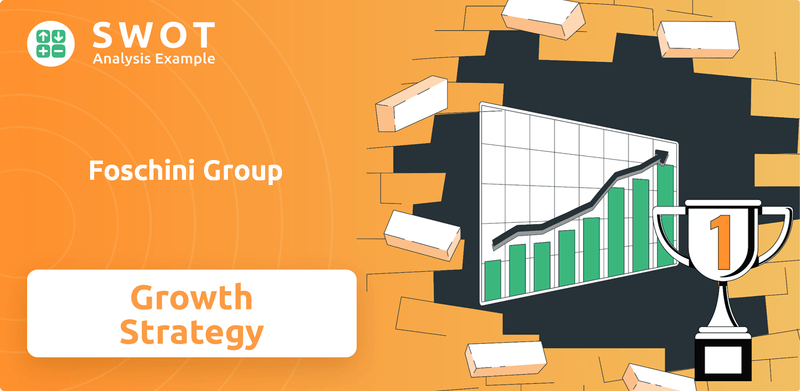
This analysis will explore the Foschini Group SWOT Analysis, delving into its growth strategy and future prospects within the South African and international retail industry. We'll examine its business development initiatives, including expansion plans and how it adapts to changing consumer behavior. Understanding TFG's financial performance and strategic partnerships is crucial for investors and business strategists alike, offering valuable insights into investment opportunities and the long-term goals of this retail powerhouse.
How Is Foschini Group Expanding Its Reach?
The Foschini Group's (TFG) expansion strategy is a multifaceted approach focusing on both geographical and product diversification. This strategy aims to strengthen its market position and explore new revenue streams within the dynamic retail industry. The company is actively pursuing growth through both organic initiatives and strategic acquisitions, ensuring a robust and adaptable business model.
TFG's expansion efforts are particularly notable in the African continent, where it seeks to leverage its existing infrastructure and adapt its offerings to local consumer preferences. This approach is complemented by a focus on premiumization and direct-to-consumer channels in markets like Australia. These initiatives are designed to enhance brand visibility and optimize distribution networks.
Furthermore, TFG is investing heavily in omnichannel capabilities, integrating its physical stores with its e-commerce platforms to provide a seamless shopping experience, aiming to capture a larger share of the growing digital retail market. This includes initiatives like click-and-collect services and personalized online recommendations.
TFG is expanding its footprint across Africa, with a focus on countries like Zambia and Ghana. This expansion leverages existing operations to build brand visibility and distribution networks. The company's strategy includes adapting offerings to diverse consumer preferences across different African markets.
The acquisition of Tapestry Home in 2024 significantly boosted TFG's presence in the homeware market. This move diversifies revenue streams and allows for cross-selling opportunities. TFG is also focused on introducing new fashion lines and lifestyle products to cater to specific consumer segments.
TFG is enhancing its omnichannel capabilities by integrating physical stores with e-commerce platforms. This includes click-and-collect services and personalized online recommendations. The goal is to capture a larger share of the growing digital retail market and provide a seamless shopping experience.
In Australia, TFG is concentrating on premiumization through brands like R.M.Williams. This involves focusing on direct-to-consumer channels. This strategy aims to enhance brand value and cater to a specific segment of consumers seeking premium products.
TFG's expansion strategy is built on geographical diversification, product category expansion, and enhancing omnichannel capabilities. These initiatives are designed to drive growth and meet evolving consumer demands. The company's approach includes strategic acquisitions and organic growth to strengthen its market position.
- Geographical expansion, particularly within Africa.
- Product category diversification through acquisitions like Tapestry Home.
- Enhancing omnichannel capabilities to integrate online and offline retail.
- Focus on premiumization and direct-to-consumer channels in key markets.
TFG's expansion initiatives are crucial for its future prospects within the retail industry. The company's focus on geographical diversification, product category expansion, and omnichannel capabilities positions it well to capitalize on market opportunities. For a deeper understanding of TFG's competitive environment, consider reviewing the Competitors Landscape of Foschini Group.
Foschini Group SWOT Analysis
- Complete SWOT Breakdown
- Fully Customizable
- Editable in Excel & Word
- Professional Formatting
- Investor-Ready Format
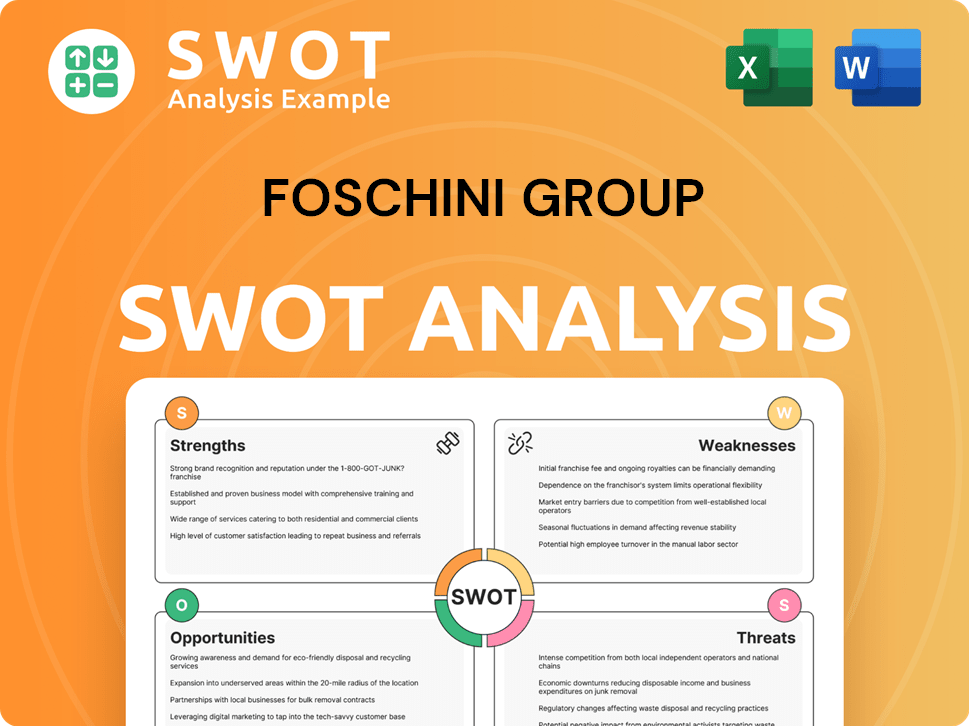
How Does Foschini Group Invest in Innovation?
The company, known as TFG, is heavily invested in innovation and technology to drive its growth. This strategy focuses on digital transformation, data analytics, and enhancing customer experiences. The objective is to improve operational efficiencies and maintain a competitive edge in the retail industry.
TFG's approach involves significant investment in its e-commerce platforms. This includes efforts to optimize user interfaces, streamline checkout processes, and improve overall online engagement. The company is also exploring the integration of AI and ML to personalize customer interactions and optimize product recommendations. This data-driven approach aims to enhance customer loyalty and increase conversion rates.
Sustainability initiatives are also intertwined with their technology strategy. TFG is exploring technological solutions for more sustainable sourcing, production, and waste reduction within its supply chain. These efforts are part of a broader strategy to adapt to changing consumer behavior and maintain a strong market position in South Africa.
TFG is focused on digital transformation by investing in its e-commerce platforms. This includes optimizing user interfaces and streamlining checkout processes. The goal is to enhance the online shopping experience and increase customer engagement.
The company leverages data analytics, AI, and ML to personalize customer interactions. This involves analyzing purchasing patterns and optimizing product recommendations. The aim is to enhance customer loyalty and increase conversion rates.
TFG uses technology to improve operational efficiencies, including automation in warehousing and logistics. This helps reduce costs and delivery times. The company's R&D investments also support in-house development of retail management systems.
Sustainability is a key focus, with TFG exploring technological solutions for sustainable sourcing and waste reduction. This includes efforts to improve supply chain practices. These initiatives are part of the company's long-term goals.
TFG forms strategic partnerships with technology providers to maintain a competitive edge. These partnerships support the company's digital infrastructure and innovation efforts. This approach helps in navigating the competitive landscape.
TFG invests in R&D for in-house development of retail management systems and CRM tools. These tools enable better inventory management and targeted marketing campaigns. These investments are crucial for business development.
TFG's digital strategy is a key component of its growth strategy, with a focus on enhancing the customer experience and improving operational efficiencies. The company's investment in technology and innovation is aimed at adapting to the evolving retail landscape. For more insights, you can read a Brief History of Foschini Group.
TFG's technology strategy is multifaceted, focusing on several key areas to drive growth and improve operational efficiency. These investments are crucial for the company's future prospects.
- E-commerce Platforms: Significant investment in optimizing user interfaces and streamlining checkout processes.
- Data Analytics: Leveraging AI and ML to personalize customer interactions and product recommendations.
- Retail Management Systems: In-house development of proprietary systems for inventory management and supply chain optimization.
- Automation: Implementing automation in warehousing and logistics to reduce costs and improve delivery times.
- Sustainability Technologies: Exploring tech solutions for sustainable sourcing and waste reduction.
Foschini Group PESTLE Analysis
- Covers All 6 PESTLE Categories
- No Research Needed – Save Hours of Work
- Built by Experts, Trusted by Consultants
- Instant Download, Ready to Use
- 100% Editable, Fully Customizable
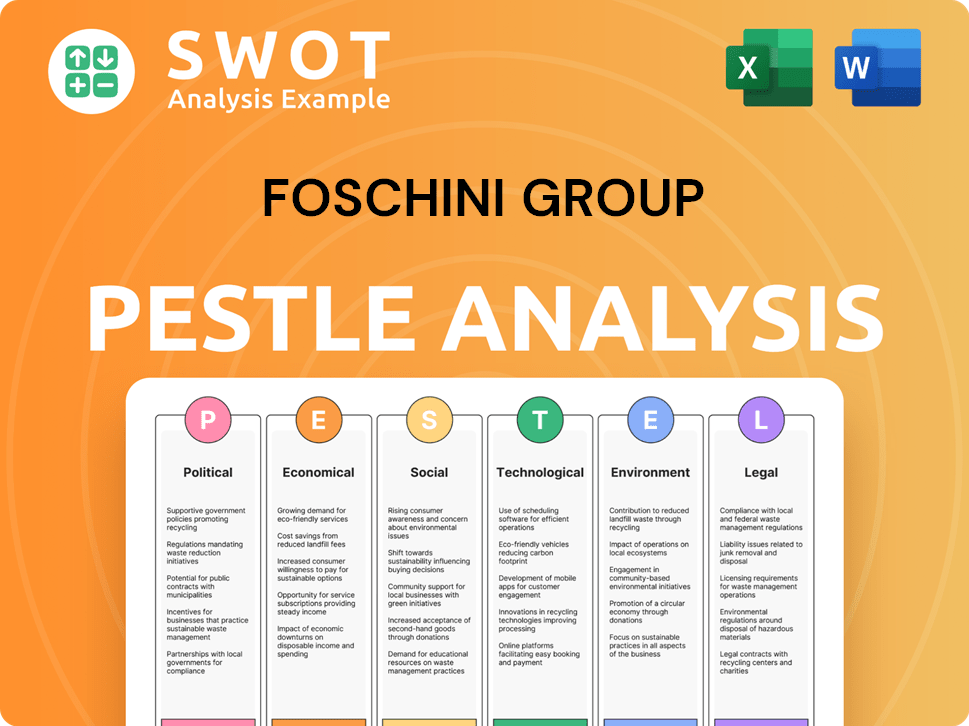
What Is Foschini Group’s Growth Forecast?
The financial outlook for the Foschini Group (TFG) reflects a strategic focus on sustainable growth within the retail industry. For the fiscal year ending March 2024, the group demonstrated robust performance, with group retail turnover increasing by 8.7% to R51.5 billion. This growth underscores the effectiveness of TFG's strategies in a dynamic market environment. The company's commitment to enhancing shareholder value is evident through its financial management and strategic initiatives.
The company's financial health is further highlighted by a significant improvement in headline earnings per share (HEPS). Additionally, the gross profit margin saw an increase, reaching 47.9%, which indicates effective cost management and pricing strategies. These financial metrics support the company's long-term goals of expanding market share and enhancing profitability. The positive financial trajectory is supported by the company's strategic investments and operational efficiencies.
Looking ahead, TFG's financial ambitions are supported by continued investment in its expansion initiatives, particularly in its omnichannel capabilities and international presence. Analyst forecasts generally project continued revenue growth for TFG in the coming years, driven by its diverse brand portfolio and strategic market positioning. The company's recent capital raise activities, including bond issuances, have been strategically utilized to fund working capital requirements and support its expansion plans.
TFG's financial performance is characterized by key indicators such as revenue growth, gross profit margin, and HEPS. The Foschini Group has demonstrated its ability to adapt to changing market conditions and consumer behavior. The company's financial strategy focuses on sustainable growth and profitability.
TFG's expansion plans include a focus on omnichannel capabilities and international presence. The company is investing in its online presence and strategic partnerships to drive growth. These initiatives are part of TFG's broader growth strategy to increase market share.
TFG's market positioning is driven by its diverse brand portfolio and strategic market focus. The company aims to cater to a wide range of consumer preferences and needs. This strategic approach supports the company's long-term goals and future prospects.
TFG's management focuses on optimizing capital allocation to maximize shareholder returns. This includes strategic investments in areas that support growth and profitability. Prudent financial management is a key aspect of TFG's strategy.
The company's financial narrative is characterized by a balance of aggressive growth pursuits and prudent financial management, aiming to deliver consistent value to its stakeholders. The company's success is also tied to its ability to navigate challenges and capitalize on opportunities in the South Africa market and beyond. For more insights into the ownership structure and financial strategies, you can explore the details on Owners & Shareholders of Foschini Group.
TFG has demonstrated consistent revenue growth, driven by its diverse brand portfolio and strategic market positioning. The company's focus on omnichannel capabilities and international expansion contributes to this growth. This growth is a key indicator of the company's success.
The company's gross profit margin has seen an uptick, reflecting effective cost management and pricing strategies. TFG's focus on profitability is a key component of its financial strategy. The company aims to enhance profitability through various strategic initiatives.
TFG continues to invest in its expansion initiatives, particularly in its omnichannel capabilities and international presence. These investments are aimed at driving future growth and enhancing market share. Strategic investments are crucial for long-term success.
TFG's management focuses on optimizing capital allocation to maximize shareholder returns. The company uses capital raise activities to fund working capital and support expansion plans. Prudent capital management is a key aspect of TFG's financial strategy.
The company is adapting to changing consumer behavior and market dynamics, including the impact of e-commerce. TFG's ability to navigate these changes is critical for its business development. The company's strategies are aligned with current market trends.
TFG's long-term goals include expanding market share and enhancing profitability. The company's strategic initiatives are aligned with these goals. The company's focus on sustainable growth is evident in its long-term planning.
Foschini Group Business Model Canvas
- Complete 9-Block Business Model Canvas
- Effortlessly Communicate Your Business Strategy
- Investor-Ready BMC Format
- 100% Editable and Customizable
- Clear and Structured Layout
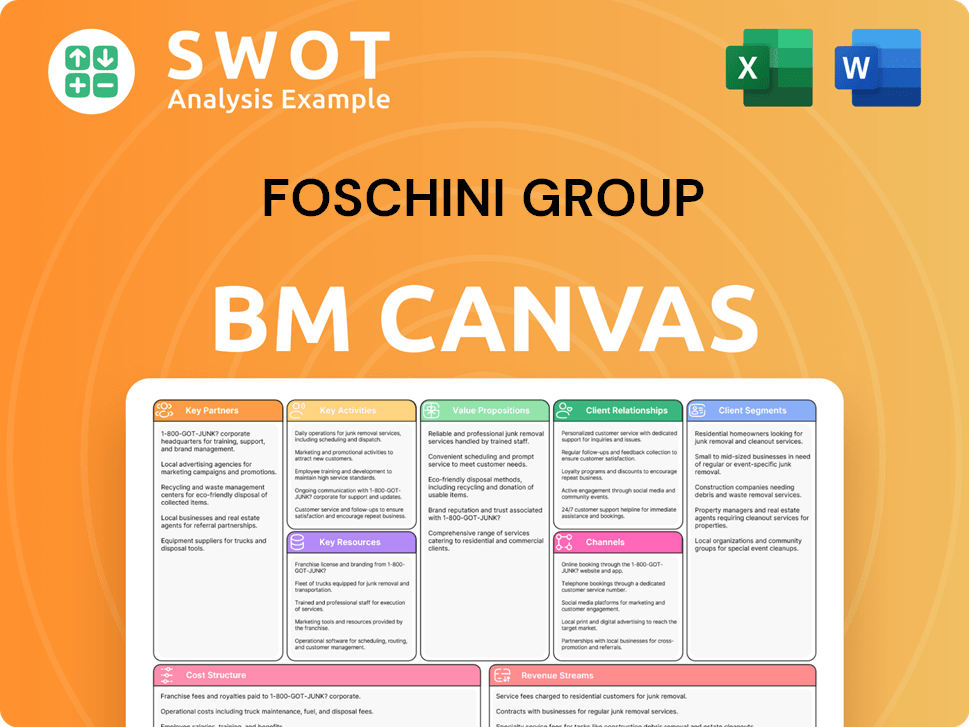
What Risks Could Slow Foschini Group’s Growth?
The success of the Foschini Group (TFG) hinges on navigating several potential risks and obstacles. The retail industry, especially in South Africa, faces constant shifts, demanding strategic agility. Understanding these challenges is crucial for assessing the company's future prospects and its growth strategy.
Intense competition, regulatory changes, and supply chain vulnerabilities are among the key hurdles. These factors can influence TFG's financial performance and expansion plans. The company's ability to adapt and mitigate these risks will be critical for its long-term goals.
Technological advancements and internal resource constraints also pose significant challenges. Remaining competitive requires continuous innovation and a strong focus on talent management. TFG’s approach to these risks will shape its ability to capitalize on opportunities within the dynamic retail landscape.
The retail industry in South Africa is highly competitive, with international fast-fashion retailers and e-commerce platforms constantly vying for market share. This pressure can lead to reduced profit margins and the need for continuous innovation in product offerings and pricing strategies. The rise of online shopping, with platforms like Takealot and Superbalist, which are popular in South Africa, intensifies the competitive environment, forcing traditional retailers to enhance their online presence and customer experience.
Changes in consumer credit regulations and labor laws can significantly impact TFG’s operations. Stricter credit regulations can affect the company's credit sales, which are a significant part of its revenue. Labor law changes, such as increases in minimum wages or changes in employment terms, can increase operational costs. The company must stay compliant with evolving regulations in South Africa and other territories where it operates to avoid penalties and maintain operational efficiency.
Global supply chain disruptions, geopolitical tensions, and unforeseen events can lead to delays, increased freight costs, and inventory shortages, impacting TFG’s ability to meet customer demand. The company is exposed to risks associated with sourcing raw materials, manufacturing products, and transporting goods from various locations. To mitigate these risks, TFG has to diversify its supplier base and implement robust inventory management systems.
Rapid advancements in retail technology require continuous investment in digital platforms and customer experience enhancements. Failing to keep pace with these advancements can lead to outdated systems and a diminished customer experience. E-commerce platforms and mobile applications are becoming increasingly important for customer engagement and sales. TFG must invest in these technologies to maintain its competitive edge and meet evolving consumer expectations.
Attracting and retaining skilled talent in a competitive market is essential for driving growth initiatives. The retail industry requires a skilled workforce in areas such as e-commerce, data analytics, and supply chain management. If TFG struggles to find and keep talented employees, it could hinder its ability to implement strategic plans and maintain operational efficiency. This impacts the company's ability to innovate and adapt to changing market conditions.
Economic downturns in South Africa or Australia can directly impact consumer spending power, affecting TFG’s sales volumes. Changes in interest rates, inflation, and employment rates can influence consumer behavior and demand for retail goods. To navigate these challenges, the company must monitor economic indicators closely and adjust its strategies accordingly, potentially through offering promotions, managing inventory levels, and controlling operational costs.
TFG uses a comprehensive risk management framework, including scenario planning and stress testing, to anticipate and prepare for various eventualities. The company's diversified brand portfolio and geographical spread act as a natural hedge against market-specific risks. Continuous investment in digital platforms and fostering a culture of innovation are crucial for adapting to technological disruptions. Proactive inventory management and supplier diversification help mitigate supply chain vulnerabilities. These strategies are essential for ensuring the long-term sustainability and financial performance of the company.
The competitive landscape includes both international and local retailers, as well as online platforms. Key competitors include fast-fashion brands like H&M and Zara, as well as local players such as Mr Price and Woolworths. E-commerce platforms such as Takealot and Amazon also pose a significant challenge. To remain competitive, TFG must continuously innovate, improve its customer experience, and enhance its value proposition. This includes offering a diverse range of products, competitive pricing, and convenient shopping options.
Foschini Group Porter's Five Forces Analysis
- Covers All 5 Competitive Forces in Detail
- Structured for Consultants, Students, and Founders
- 100% Editable in Microsoft Word & Excel
- Instant Digital Download – Use Immediately
- Compatible with Mac & PC – Fully Unlocked
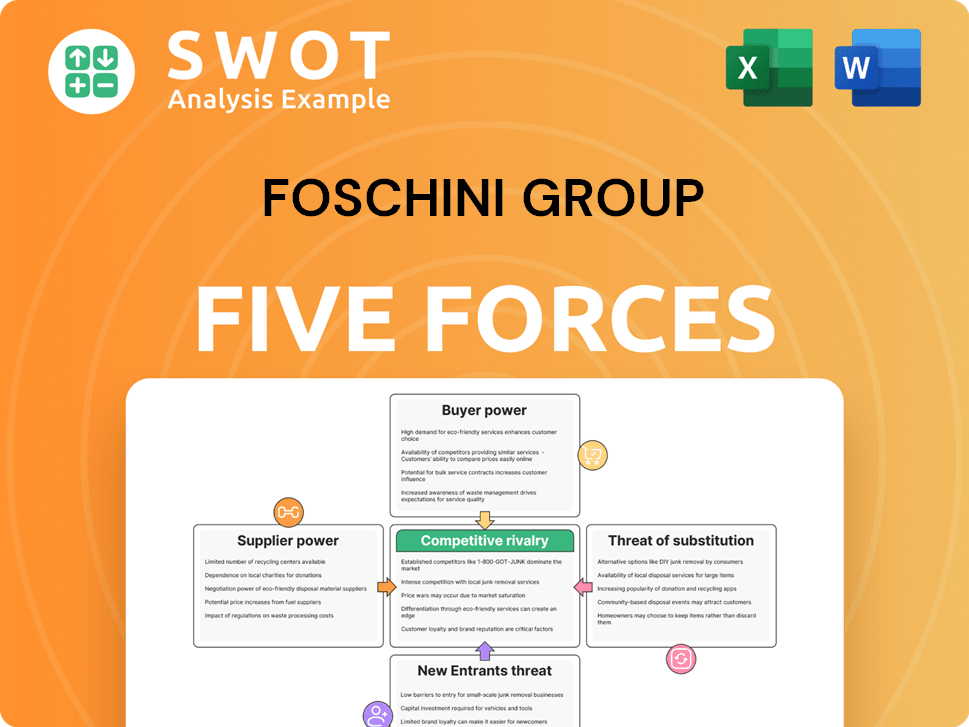
Related Blogs
- What are Mission Vision & Core Values of Foschini Group Company?
- What is Competitive Landscape of Foschini Group Company?
- How Does Foschini Group Company Work?
- What is Sales and Marketing Strategy of Foschini Group Company?
- What is Brief History of Foschini Group Company?
- Who Owns Foschini Group Company?
- What is Customer Demographics and Target Market of Foschini Group Company?
Disclaimer
All information, articles, and product details provided on this website are for general informational and educational purposes only. We do not claim any ownership over, nor do we intend to infringe upon, any trademarks, copyrights, logos, brand names, or other intellectual property mentioned or depicted on this site. Such intellectual property remains the property of its respective owners, and any references here are made solely for identification or informational purposes, without implying any affiliation, endorsement, or partnership.
We make no representations or warranties, express or implied, regarding the accuracy, completeness, or suitability of any content or products presented. Nothing on this website should be construed as legal, tax, investment, financial, medical, or other professional advice. In addition, no part of this site—including articles or product references—constitutes a solicitation, recommendation, endorsement, advertisement, or offer to buy or sell any securities, franchises, or other financial instruments, particularly in jurisdictions where such activity would be unlawful.
All content is of a general nature and may not address the specific circumstances of any individual or entity. It is not a substitute for professional advice or services. Any actions you take based on the information provided here are strictly at your own risk. You accept full responsibility for any decisions or outcomes arising from your use of this website and agree to release us from any liability in connection with your use of, or reliance upon, the content or products found herein.